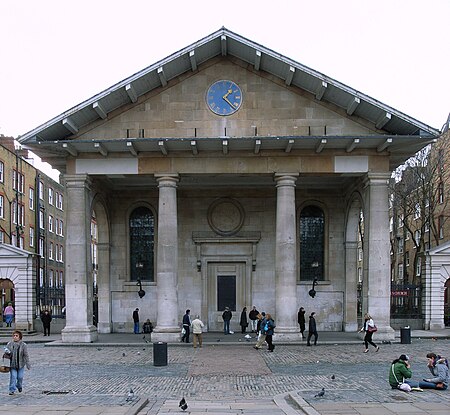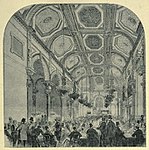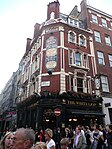St Paul's, Covent Garden

St Paul's Church is a Church of England parish church located in Bedford Street, Covent Garden, central London. It was designed by Inigo Jones as part of a commission for the 4th Earl of Bedford in 1631 to create "houses and buildings fit for the habitations of Gentlemen and men of ability". As well as being the parish church of Covent Garden, the church has gained the nickname of "the actors' church" by a long association with the theatre community. Completed in 1633, St Paul's was the first entirely new church to be built in London since the Reformation. Its design and the layout of the square have been attributed to Inigo Jones since the 17th century, although firm documentary evidence is lacking. According to an often repeated story, recorded by Horace Walpole, Lord Bedford asked Jones to design a simple church "not much better than a barn", to which the architect replied "Then you shall have the handsomest barn in England". The building is described by Sir John Summerson as "a study in the strictly Vitruvian Tuscan Order" and "almost an archaeological exercise". The description of a Tuscan or Etruscan-style temple by Vitruvius, which Jones closely follows in this building, reflects the early forms of Roman temple, which essentially continued Etruscan architecture, though quite what Vitruvius intended by his account has divided modern scholars. It has been seen as a work of deliberate primitivism: the Tuscan order is associated by Palladio with agricultural buildings.The temple front with a portico on the square has never in fact been the main entrance, although this may have been Jones's first intention. The altar lies behind this wall, and the entrance is at the far end to this. The stone facing of this facade is also later; originally it was apparently brick with stucco. The other sides of the building remain brick, with details in stone. The triangular pediments at both ends are in wood.
Excerpt from the Wikipedia article St Paul's, Covent Garden (License: CC BY-SA 3.0, Authors, Images).St Paul's, Covent Garden
Inigo Place, City of Westminster Covent Garden
Geographical coordinates (GPS) Address Nearby Places Show on map
Geographical coordinates (GPS)
| Latitude | Longitude |
|---|---|
| N 51.511388888889 ° | E -0.12416666666667 ° |
Address
Inigo Jones Garden
Inigo Place
WC2E 9ED City of Westminster, Covent Garden
England, United Kingdom
Open on Google Maps








